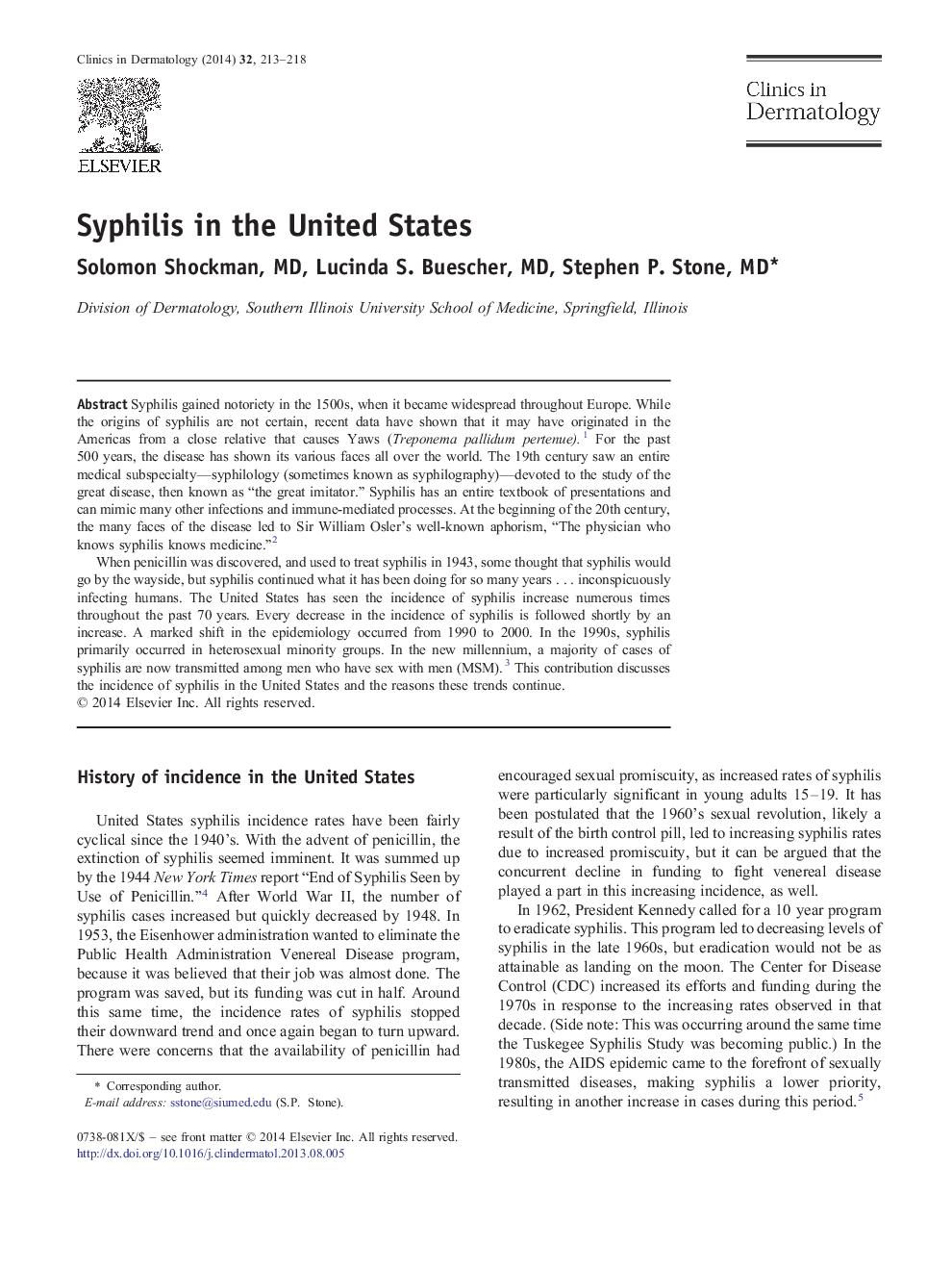| Article ID | Journal | Published Year | Pages | File Type |
|---|---|---|---|---|
| 3194203 | Clinics in Dermatology | 2014 | 6 Pages |
Syphilis gained notoriety in the 1500s, when it became widespread throughout Europe. While the origins of syphilis are not certain, recent data have shown that it may have originated in the Americas from a close relative that causes Yaws (Treponema pallidum pertenue). 1 For the past 500 years, the disease has shown its various faces all over the world. The 19th century saw an entire medical subspecialty—syphilology (sometimes known as syphilography)—devoted to the study of the great disease, then known as “the great imitator.” Syphilis has an entire textbook of presentations and can mimic many other infections and immune-mediated processes. At the beginning of the 20th century, the many faces of the disease led to Sir William Osler’s well-known aphorism, “The physician who knows syphilis knows medicine."2When penicillin was discovered, and used to treat syphilis in 1943, some thought that syphilis would go by the wayside, but syphilis continued what it has been doing for so many years . . . inconspicuously infecting humans. The United States has seen the incidence of syphilis increase numerous times throughout the past 70 years. Every decrease in the incidence of syphilis is followed shortly by an increase. A marked shift in the epidemiology occurred from 1990 to 2000. In the 1990s, syphilis primarily occurred in heterosexual minority groups. In the new millennium, a majority of cases of syphilis are now transmitted among men who have sex with men (MSM).3 This contribution discusses the incidence of syphilis in the United States and the reasons these trends continue.
